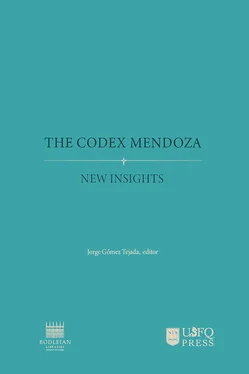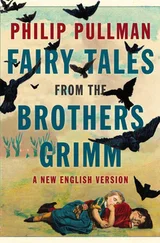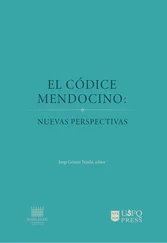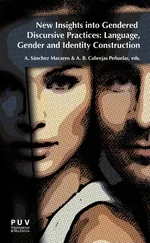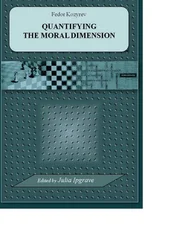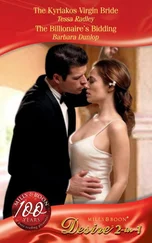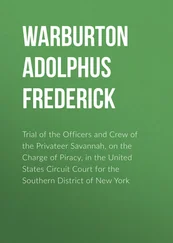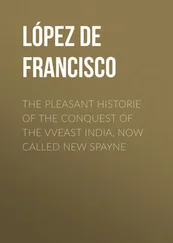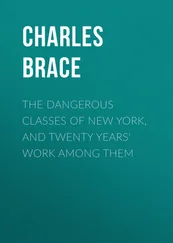Acknowledgements
The non-invasive MOLAB campaign on the five Mesoamerican manuscripts held at the Bodleian Library in Oxford was carried out thanks to the financial support of the European Project CHARISMA. Bruce Barker-Benfield (Bodleian Libraries), Marinita Stiglitz (Bodleian Libraries), and Noemi Mancinelli (SMAArt, Perugia) are gratefully acknowledged for their help during the in situ campaign. Our deepest thanks to Jorge Gómez Tejada who, besides inviting us to contribute to the present volume, thoroughly discussed different issues with us and carefully edited our paper. Claudia Brittenham read and discussed a draft of this text, providing insightful comments; Piero Baglioni and Rodorico Giorgi kindly answered our questions on the Calakmul murals.
References
Álvarez Icaza Longoria, María Isabel. 2014. “El Códice Laud, Su Tradición, Su Escuela, Sus Artistas.” Tesis doctoral, Universidad Nacional Autónoma de México.
Batalla Rosado, Juan José. 2007a. “Matrícula de tributos y Códice Mendoza: La autoría de un mismo ‘maestro de pintores’ para los folios 6-R a 11-V del primero y la totalidad del segundo.” Anales del Museo de América, no. 15: 9–20.
———. 2007b. “The Scribes Who Painted the Matrícula de Tributos and the Codex Mendoza.” Ancient Mesoamerica 18 (1): 31–51. https://doi.org/10.1017/S0956536107000077.
Berdan, Frances. 1992. “The Imperial Tribute Roll of the Codex Mendoza.” In The Codex Mendoza, edited by Frances Berdan and Patricia Rieff Anawalt, 2:55–79. Berkeley: University of California Press.
Brittenham, Claudia, and Diana Magaloni Kerpel. 2017. “The Eloquence of Color. Material and Meaning in the Cacaxtla Murals.” In Making Value, Making Meaning. Techné in the Pre-Columbian World, edited by Cathy Lynn Costin, 63–94. Washington D.C.: Dumbarton Oaks.
Brunetti, Brunetto Giovanni, Costanza Miliani, Francesca Rosi, B. Doherty, L. Monico, Aldo Romani, and Antonio Sgamellotti. 2016. “Non-Invasive Investigations of Paintings by Portable Instrumentation: The MOLAB Experience.” Topics in Current Chemistry 374 (1): 10. https://doi.org/10.1007/s41061-015-0008-9.
Buti, David. 2012. “Multi-Technique Approach for the in Situ Study of Ancient Manuscripts.” Tesis doctoral, Università degli Studi di Firenze.
Buti, David, Davide Domenici, Chiara Grazia, J. Ostapkowicz, S. Watts, Aldo Romani, F. Presciutti, Brunetto Giovanni Brunetti, Antonio Sgamellotti, and Costanza Miliani. 2018. “Further Insight into Mesoamerican Paint Technology: Unveiling the Colour Palette of the Pre-Columbian Codex Fejérváry-Mayer by Means of Non-Invasive Analysis.” Archaeometry 60 (4): 797–814. https://doi.org/10.1111/arcm.12341.
Clark, James Cooper. 1938. Codex Mendoza: The Mexican Manuscript Known as the “Collection of Mendoza” and Preserved in the Bodleian Library. Oxford, UK: Waterlow and Sons.
Domenici, Davide. 2016. “La memoria fiorita. Scrittura, memoria e materialita’ del colore nell’antica Mesoamerica.” Confluenze: Rivista di Studi Iberoamericani 8 (2): 161–80.
Domenici, Davide, David Buti, Costanza Miliani, Brunetto Giovanni Brunetti, Antonio Sgamellotti, and Bruno Brunetti. 2014. “The Colours of Indigenous Memory: Non-Invasive Analyses of Pre-Hispanic Mesoamerican Codices.” In Science and Art: The Painted Surface, edited by Antonio Sgamellotti, Brunetto Giovanni Brunetti, and Costanza Miliani, 94–119. Cambridge: Royal Society of Chemistry.
Domenici, Davide, David Buti, Costanza Miliani, and Antonio Sgamellotti. 2018. “Changing Colours in a Changing World. The Technology of Codex Painting in Early Colonial Mexico.” In Materia Americana. The ‘Body’ of Spanish American Images (16th to Mid-19th Centuries), edited by Gabriela Siracusano and Agustina Rodríguez Romero. Los Angeles: The Getty Foundation.
Domenici, Davide, Chiara Grazia, David Buti, Aldo Romani, Costanza Miliani, and Antonio Sgamellotti. 2017. “La cochinilla en la pintura de códices prehispánicos y coloniales.” In Rojo mexicano, edited by Georges Roque. Ciudad de México: CONACULTA.
Domenici, Davide, Costanza Miliani, and Antonio Sgamellotti. 2019. “Cultural and Historical Implications of Non-Destructive Analyses on Mesoamerican Codices in the Bodleian Libraries.” In Mesoamerican Manuscripts: New Scientific Approaches and Interpretations, edited by Maarten Jansen, Virginia M. Llado-Buisán, and Ludo Snijders. Brill: Leiden.
Dupey García, Élodie. en imprenta. “Aztec Reds. Investigating the Materiality of Color and Meaning in a Pre-Columbian Society.” In Essays in Global Color History: Interpreting the Ancient Spectrum, edited by Rachael Goldman. Piscataway: Gorgias Press.
———. 2009. “Du rouge de la cochenille à la transmission des savoirs traditionnels: Les multiples significations de tlapalli chez les anciens Nahua (Mexique).” In L’Antiquité en couleurs, edited by Marcelo Carastro, 207–22. Grenoble: Éditions Horos.
———. 2010. “Les couleurs dans les pratiques et les représentations des Nahuas du Mexique central (xive -xvie siècles).” Tesis doctoral, École Pratique des Hautes Études.
———. 2015. “El color en los códices prehispánicos del México Central: Identificación material, cualidad plástica y valor estético.” Revista Española de Antropología Americana 45 (1): 149–66.
———. 2016. “Los colores del Códice borbónico y el átlas en cromotipia de Ernest-Theodore Hamy.” Estudios de Cultura Náhuatl 52: 225+.
Giorgi, R., D. Chelazzi, and Diana Magaloni Kerpel. 2014. “Unveiling the Artistic Technique of the Florentine Codex: When the Old World and the New World Met.” In Science and Art: The Painted Surface, edited by Antonio Sgamellotti, Brunetto Giovanni Brunetti, and Costanza Miliani, 147–69. Cambridge: Royal Society of Chemistry.
Gómez Tejada, Jorge. 2012. “Making the Codex Mendoza, Constructing the Codex Mendoza: A Reconsideration of a 16th Century Mexican Manuscript.” Tesis doctoral, Yale University.
Grazia, Chiara. 2015. “Through the Shades of Time, from Pre-Columbian to Contemporary Art: Application of UV-Vis-NIR Reflectance and Fluorescence Spectroscopy to Understand Painting Materials.” Tesis doctoral, Università degli Studi di Perugia.
Hammond, Norman. 2005. “Clarifying Color in the Codex Mendoza.” Latin American Antiquity 16 (4): 467–68. https://doi.org/10.2307/30042510.
Haude, Mary Elizabeth. 1998. “Identification of Colorants on Maps from the Early Colonial Period of New Spain (Mexico).” Journal of the American Institute for Conservation 37 (3): 240–70. https://doi.org/10.1179/019713698806082822.
Howe, Kathleen Stewart. 1992. “The Relationship of Indigenous and European Styles in the Codex Mendoza.” In The Codex Mendoza, edited by Patricia Rieff Anawalt and Frances Berdan, 1:25–33. Berkeley, CA: University of California Press.
Kirby, Jo, Marika Spring, and Catherine Higgitt. 2005. “The Technology of Red Lake Pigment Manufacture: Study of the Dyestuff Substrate.” National Gallery Technical Bulletin 26: 71–87.
López Luján, Leonardo, and Giacomo Chiari. 2012. “Color in Monumental Mexica Sculpture.” RES: Anthropology and Aesthetics 61–62 (March): 330–42. https://doi.org/10.1086/RESvn1ms23647839.
Magaloni Kerpel, Diana. 2011. “Painters of the New World: The Process of Making the Florentine Codex.” In Colors between Two Worlds: The Florentine Codex of Bernardino de Sahagún, edited by Gerhard Wolf and Joseph Connors, 47–76. Florence: Kunsthistorisches Institut in Florenz Max-Plank-Institut - Villa I Tatti The Harvard University Center for Italian Renaissance Studies.
———. 2012. “The Traces of the Creative Process: Pictorial Materials and Techniques in the Beinecke Map.” In Painting a Map of Sixteenth-Century Mexico City: Land, Writing, and Native Rule, edited by Mary Ellen Miller and Barbara E. Mundy, 75–90. New Haven: Yale University Press.
Читать дальше
